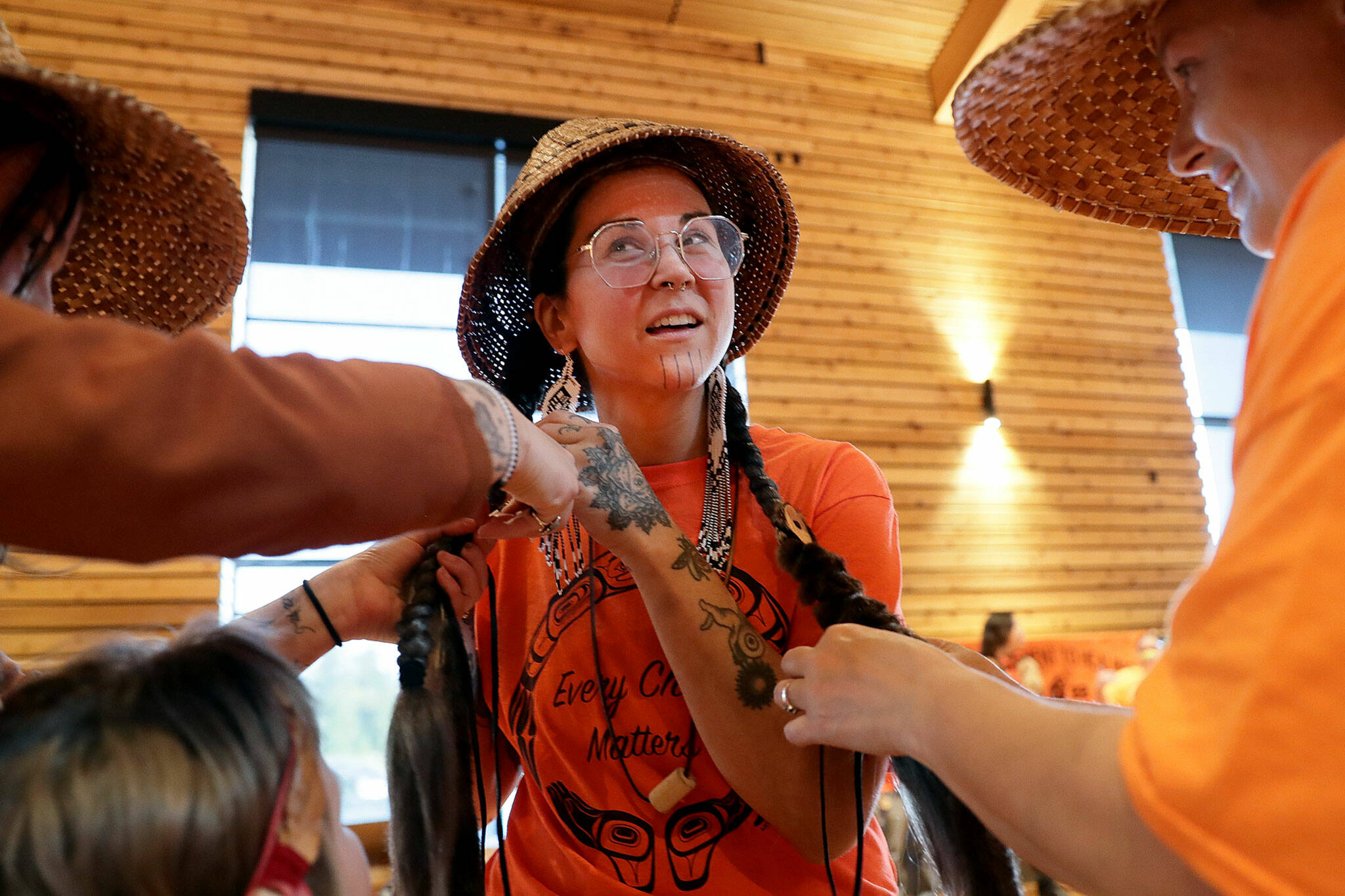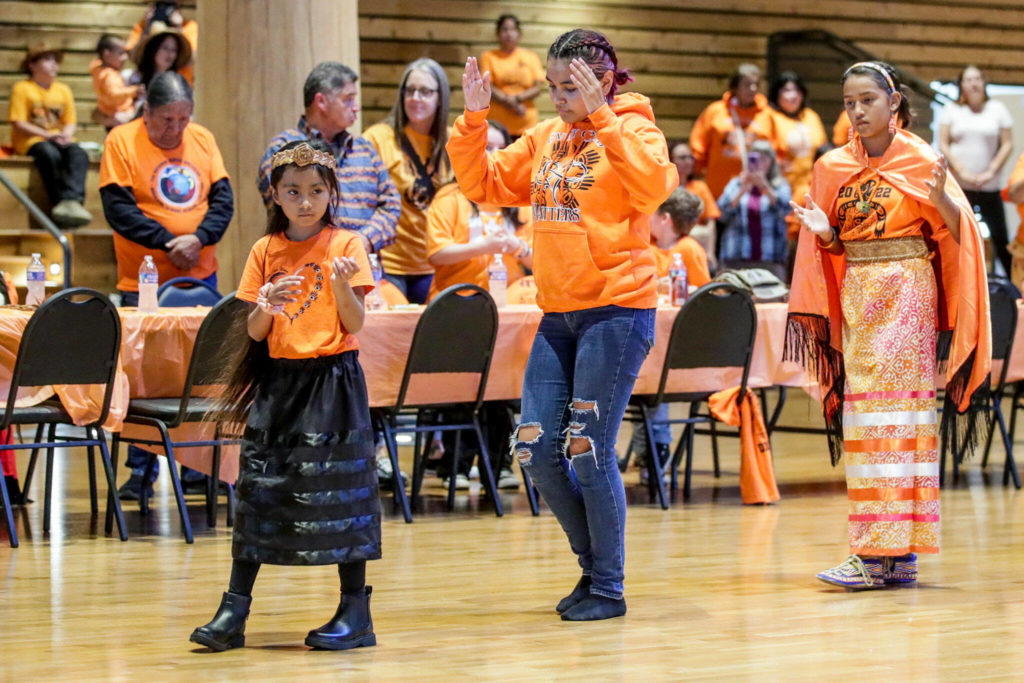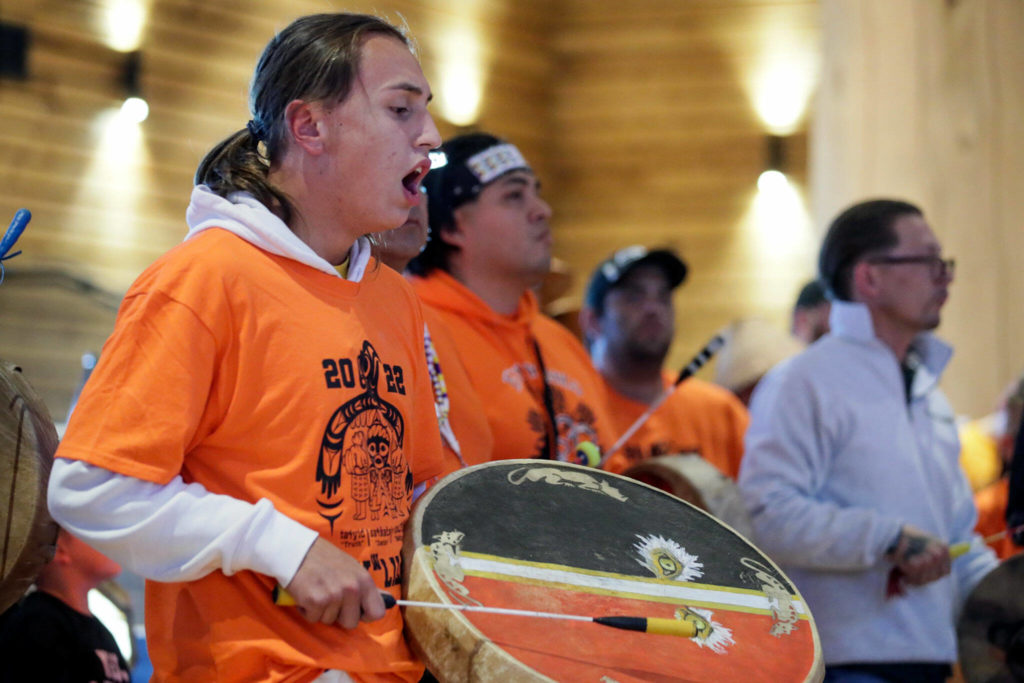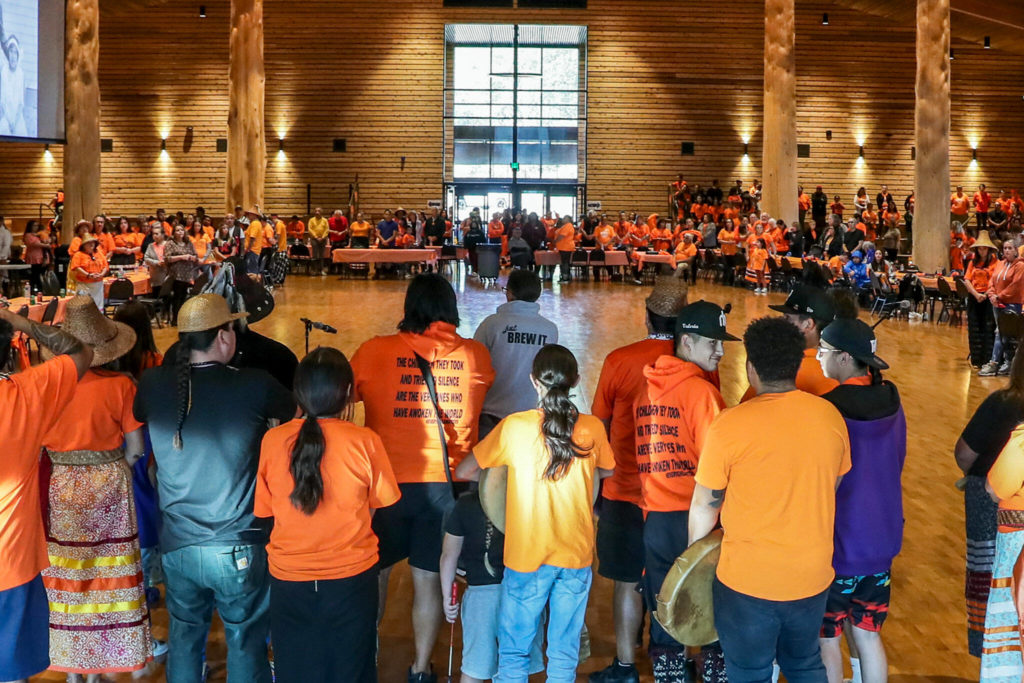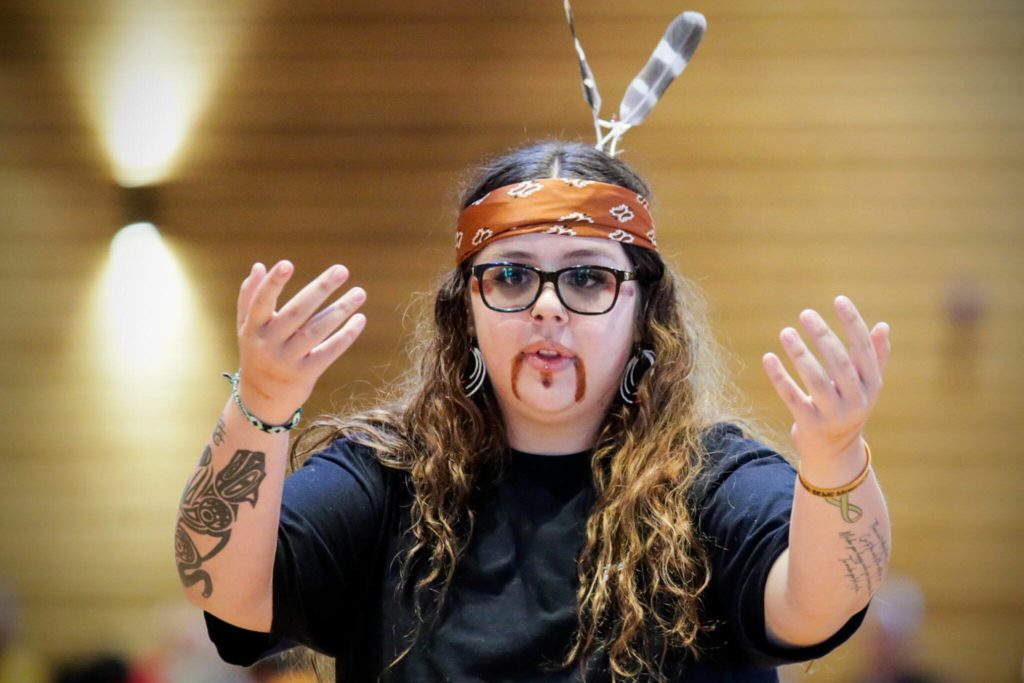TULALIP — Whenever she writes about the history of the Tulalip Tribes, Tessa Campbell starts by explaining the boarding schools.
Her people’s history stretches back much further than the 1850s, when the first iteration of the Tulalip school opened as a Catholic mission. But the trauma the school caused for its students has affected every aspect of life for generations of tribal members, said Campbell, the former senior curator with the Hibulb Cultural Center.
That type of trauma “sticks to you,” she said.
On Friday at a gathering for the National Day of Remembrance for U.S. Indian Boarding Schools, Campbell told friends and family that now is the time to “collectively heal together from this past trauma and pain.”
“And that is what I see tonight,” she said, looking out over a crowd of dozens of people dressed in bright orange.
Also known as Orange Shirt Day, Sept. 30 recognizes the victims and survivors of federally mandated schools intended to strip Indigenous people of their culture. People wear orange as a nod to Phyllis Webstad, a survivor of a Canadian boarding school whose “shiny new orange shirt, bought by her grandmother, was taken from her as a six-year-old girl,” on her first day at the school, according to the Orange Shirt Day website. She never saw that shirt again.
Boarding schools for Native American children dotted the continent for well over a century. At Tulalip, hundreds of Indigenous children were taken from their parents and put in a federal school that operated for three decades, starting around 1900. There, they were subject to malnourishment, neglect and physical and sexual abuse.
School leaders would withhold food from children or beat them if they spoke their Native language, sang traditional songs or wore Native clothing. The idea was to force the children to assimilate.
Children spent 10 months of the year away from their parents, if they ever made it home at all. Some students were beaten to death at the schools. Others died of disease, hundreds of miles away from their loved ones.
At least 30 school-age children were buried in the two cemeteries on Tulalip Bay, north of Everett. There are dozens more unmarked graves in local burial grounds that probably contain a mix of children and adults.
At Tulalip, the federal school closed in 1932, but it left lasting wounds.
“We’re all still trying to heal from the experiences that our ancestors had,” said Jessica Bustad, executive director of the Tulalip Tribes Education Division.
Bustad recounted going through the list of names of children who attended the Tulalip school and getting “an overwhelming feeling of grief and sadness, but also that feeling of how resilient our people were.”
“We are still here today,” said Bustad, whose great-grandmother Edith Percival Parks survived the boarding school and became the first woman on the Tribal Council in 1936.
“Our elders and ancestors were able to hold onto our culture and traditions, even though they had to go through extremely traumatic events,” Bustad said.
In Edmonds, Indigenous community members organized an Orange Shirt Day march. They sang and danced as they walked from Gold Bar Park to the Edmonds School District offices.
Resilience, strength and healing took center stage at the Tulalip Tribes event this year. For more than three hours, people danced, sang and shared stories.
“We need culture as medicine. We need art as medicine,” said Campbell, the former museum curator who spoke at the Tulalip event. “We need our songs and stories as medicine. We need stories of love and compassion.”
The audience lifted their hands to recognize the survivors of the schools and to honor those children who never made it home. A slideshow with pictures and names of Indigenous students who attended the boarding school at Tulalip played on a loop above a large rectangle of tables. Children in orange shirts played and laughed in the center of the room during pauses in the program.
This was the second year the Tulalip Tribes have hosted an event for the boarding school awareness day. In some ways, this evening felt more joyous than before, because it emphasized the strength of Indigenous people, Bustad said.
The evening ended with a sort of jam session. Thunderous drums and voices carried into the parking lot outside the meeting hall. The music stretched into the night.
“Our people are ready for unity and healing,” Bustad said. “We are only getting stronger. This is a big statement to how resilient we are.”
Mallory Gruben is a Report for America corps member who writes about education for The Daily Herald.
Mallory Gruben: 425-339-3035; mallory.gruben@heraldnet.com; Twitter: @MalloryGruben
Talk to us
> Give us your news tips.
> Send us a letter to the editor.
> More Herald contact information.
